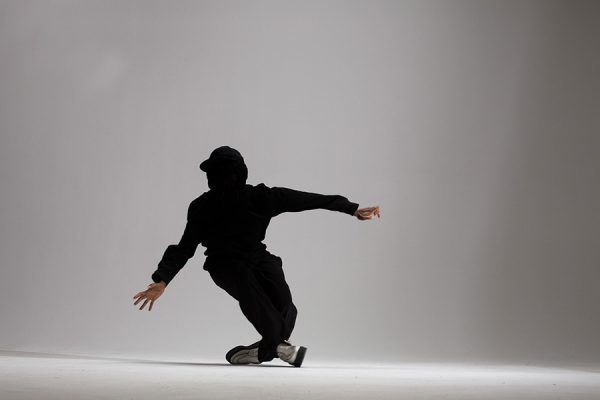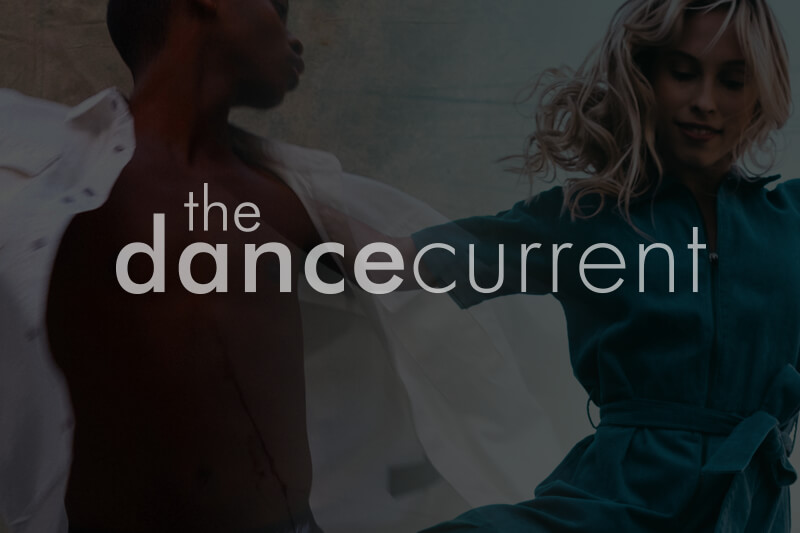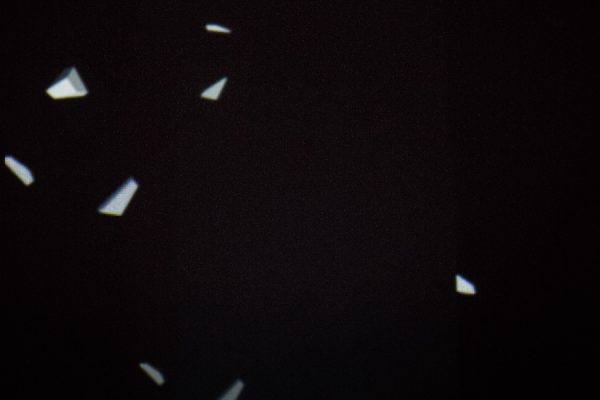I grew up on a farm in rural Manitoba, attending school in a small town nearby. Nestled in the Sioux Valley, it was a visual respite from the glorious but unrelenting prairie. On a hill overlooking the town was the ghost of a violent history — a residential school. With that recognizable red brick structure, the building was and still is a ghostly presence — a menacing beacon of the same anger, guilt and shame played out across Canada. Because I was young I picked up only tones of the enmity. Farmers farmed their land without talk of land rights or treaties, but animosity between settlers and First Nations people was often palpable.
~
Bearing is a dance opera co-created and directed by Yvette Nolan (Algonquin), Michael Greyeyes (Plains Cree) and a cast of dancers, actors, singers and musicians. The world premiere of the work was presented at this year’s Luminato festival in Toronto, and the work is one I’m sure will become a vital piece of Canadian theatre. The co-creators worked with the idea that every Canadian has been in some way impacted by the disgraceful legacy of residential schools — that we have all been irrevocably altered by state violence in some way. As Greyeyes explains it in the post-show discussion, “If you’re Canadian, you’re a part of it. What happened then echoes and reverberates through all our lives.” Bearing is meant to encourage a collective carrying of the burden of this ugly history — one that is also still very much present — by Indigenous and non-Indigenous people alike. It’s a high-concept work that offers, I think, new opportunities for empathizing with survivors and their descendants through the catharsis of theatrical embodiment.
It’s important to note the varied background of the cast of this work. Greyeyes and Nolan’s parents were themselves residential school survivors and it was imperative to them to work with a varied cast to support the goal of the production right in its creation stages. The virtuosic musical cast consisted of a small string orchestra and percussion, with direction by Gregory Oh. Vocals were written by librettist Spy Dénommé-Welch and performed by Marion Newman and current and former members of the Canadian Youth Orchestra of Canada, who sang works by J.S. Bach, Claude Vivier, Dénommé-Welch and Catherine Magowan. The actors and dancers were Irvin Chow, Aria Evans, Ceinwen Gobert, Ana Groppler, Louis Laberge-Côté, Daniel McArthur, Sophie Merasty, Brandon Oakes and Jillian Peever. Although the various components could have made the work complex and varied, the overall effect was of elegant simplicity and integration.
The stage dressing is sparse, set only with a semicircle of utilitarian chairs. We see projections of archival photographs from residential schools on the stage floor — part of Laura Warren’s projection design. The performers begin onstage and their movements are abstract — slow and fluid, but weighted. The “Canadians,” in the work, dress slowly in clothing of students in residential schools throughout Act I, “Jesu, meine Freude.” Three of the performers (themselves Indigenous) play a family affected by residential schools. Amidst abstract movement, there are several impressions that stand out in this act. One performer, an Elder Indigenous woman, writes on an invisible chalkboard positioned as if the audience lay behind the wall it hangs on. Her writing appears inscribed onto the stage floor behind her. I make out “You do unto me …” before she erases it in the air and the words on the floor disappear. There’s a religious air to the music and imagery, and the floor transforms into the stained glass of a church window.
Interactions between the performers are both sympathetic and confrontational. There is soon a clear divide between the dancers, moving in the centre of the stage, and the three actors resigned to the peripheries. The three are a family — the matriarch, her daughter and son. At one point we see the daughter and her uncle engage in conversation as he relays how her mother didn’t give her up from lack of love; rather, she was seized by the state. Although we don’t hear any words, the story of familial destruction is so familiar now that it’s recognizable from simple gestures. In another moment we see the son with a bottle of alcohol. He pours it out in a moment of frustration and it hits the floor as dirt, not liquid — a symbol of the malignancy of multi-generational trauma.
In the second act, the Indigenous family moves into the audience, joining us, but apart. They are lit by spotlights as they watch the non-Indigenous dancers enact experiences from residential school. The chairs are moved to the middle of the stage in row-like formations and we see more archival images projected into the stage floor — this time of children’s faces. There’s an ominous score with a startling, booming low drum and eerie strings. It sounds like an approaching hoard of insects.
A standout part of Act II, “Wo bist du Licht!,” is Toronto-based dancer, Louis Laberge-Côté’s depiction of a priest, which Greyeyes later describes as an “achievement in Canadian dance.” In this role, a character of his own creation, Laberge-Côté dictates the students in the school as if they had puppet strings or by a voodoo summoning. The control feels so total in mind and body, that there is painful weight and effort to every movement the dancers make; they appear psychologically crippled. It takes me on a thought tangent about the nature of possession. Can those who are possessed ever rest? Can they find moments of respite? The malignancy of this history doesn’t seem to allow for rest.
There is some confusing imagery throughout Act II; in one moment the priest is abusing a student, but then there’s a reversal in power as she kicks him back. But dysfunction and anxiety are clear throughout the portrayal. The characters are lost in their own pain, and the real tragedy is that they can’t relate to each other either, avoiding eye contact or touching, except in aggressive or self-protective manners. It’s a private suffering, as they’re robbed of true connections with those around them.
Throughout this act my eyes are occasionally drawn to the family, still sitting stoically among us, lit within the packed house. Their gaze is powerful. There is catharsis, it seems, in watching others act out your personal loss, trauma and grief onstage. It feels like a model for healing, encompassing an empathetic, rather than sympathetic, relationship. The distinction between these terms may at first seem pedantic; however, whereas sympathy means feeling with, empathy involves feeling from within. The way we typically think of reconciliation is more aligned with a sympathetic understanding of the trauma of others. It’s easier because what you can’t typically know about another person’s trauma is how it resides in the body.
In Act III, “Sojourn,” Marion Newman descends downstage centre. Her presence, her voice and the trailing blue train of her dress fill the space with a cleansing energy. The dancers clean up the mess, chairs flung and clothing crumpled are uprighted and worn. The librettist gestures to the three elders in the audience and extinguishes their spotlight, one by one. “Whose light are you taking?” she asks. “Vanquish the great grief you carry and chart a new course,” the singer tells each dancer. The dancers look at each other at last, seeing each other for the first time.
Because of the timing of this work, premiering just prior to the sesquicentennial anniversary of Canada’s Confederation, it seemed to fill an emotional hole in the collective Canadian psyche. I couldn’t help but reflect on a review I was asked to write in 2016 on the Royal Winnipeg Ballet’s Going Home Star, a ballet about truth and reconciliation that left me with a feeling of unease about how we narrate ugly colonial narratives, particularly through traditional western aesthetic forms (forms often thought of as non-Indigenous). My hesitancy stemmed less from formal aesthetic concerns and more from the fact that the narrative trajectory of the ballet tended to, in my opinion, sanitize the evil of the history and to tie up the story in a bow near the end. In this ballet, for example, the priest character felt comically villainous. Although there was a similar feeling of positively and hopefulness at the end of Bearing, the production also seemed to offer strategies for continuing the discussion in positive ways. It felt like the start of something productive.
I appreciated the candidness of the creators and artists (both in the program notes and the talkback) about the creation process as an Indigenous mode of creation. To that point, in the talkback it was touching to witness the artists’ willingness to engage with questions about the choice to portray this history through a “western” form. Nolan stressed that their chosen aesthetics, both movement and music, are Indigenous because it was made by and created in an Indigenous way, explaining, “Those divisions are arbitrary now.”
For non-Indigenous Canadians, recognizing that Canada’s residential school system is not in the past is the first step toward helping to carry the story. In the words of Greyeyes, “Until we face its legacy together, its long shadows will haunt and divide us”
Tagged: Indigenous, Irvin Chow, Opera, All , Toronto





